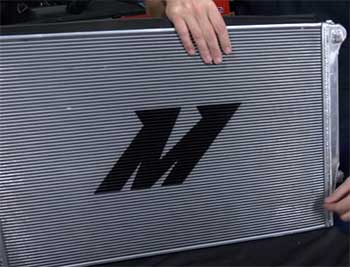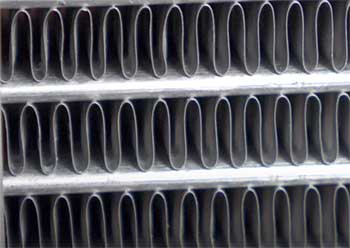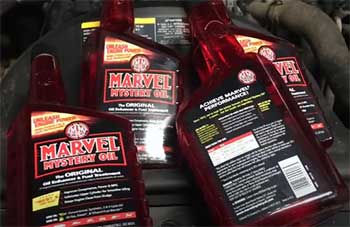After dealing with several overheating issues in my older sports car, I decided it was time to upgrade the stock radiator to an aftermarket aluminum one. The Mishimoto brand came highly recommended by members of some online forums I’m active in, with many touting their radiators as being high quality and providing excellent cooling capabilities.
I ended up purchasing one of their all-aluminum racing radiators to replace the old copper/brass one in my car, and after installing it and using it for the last 6 months, here is my take on whether a Mishimoto radiator is worth the investment.
Pros of the Mishimoto Radiator
- Drastically Improved Cooling

This was the main reason I upgraded in the first place – I was tired of seeing the temperature gauge creep up during spirited driving sessions on hot days.
The Mishimoto radiator has completely alleviated all overheating issues.
Even on 100°F+ days during track events, coolant temperatures stay right where they should.
The increased cooling capacity mainly comes from the upgraded materials – aluminum conducts heat better than copper/brass.
Mishimoto uses high quality aircraft grade aluminum paired with laser welded end tanks, giving their radiators superior thermal conductivity.
- Reduced Coolant Temp Fluctuations
With the old radiator, coolant temperatures were constantly fluctuating, spiking during hard acceleration then dropping again when off throttle. This thermal cycling can lead to premature failure as materials expand/contract.
The Mishimoto radiator holds temperatures steady, rarely fluctuating more than a few degrees from the median point. This is much easier on engine components and improves consistency.
- Lighter Weight
Aluminum weighs about half as much as copper/brass radiators. The Mishimoto unit I installed shaved approximately 8 lbs of weight compared to the old one. This is weight removed from the very front of the car, improving handling by reducing rotational mass.
Every pound saved also slightly improves acceleration and fuel economy. While not a huge effect, every bit counts when modifying performance vehicles.
- Increased Structural Integrity

Many OEM radiators from the 80s/90s are prone to cracking along the plastic end tanks or corroding internally over time.
This was happening to my old one.
The Mishimoto uses aircraft grade TIG welded aluminum end tanks that are far more durable than the old plastic ones.
The all aluminum design won’t have issues with internal corrosion either.
Overall, it feels like a very robust and high quality piece that should hold up for many more miles.
- Improved Aesthetics
This one may seem superficial, but to enthusiasts who spend a lot of time looking at their engine bay, aesthetics matter. The Mishimoto with its clean welds and minimal branding simply looks nice when compared to the older OEM-style radiator.
It’s a functional upgrade that also happens to improve the visual appeal when you pop the hood. The all aluminum construction just looks neat and “high-tech”.
Cons of the Mishimoto Radiator
While the pros definitely outweighed the cons for me, there are a few downsides to consider:
- Higher Upfront Cost
There’s no getting around the fact that aluminum radiators are expensive. The Mishimoto unit cost me $350, whereas a new OEM-style replacement would’ve been around $120. You’re paying a premium for better materials and performance.
However, considering the OEM ones often need replaced every few years anyway, an aluminum radiator should save money in the long run with its increased lifespan. But the high upfront cost is definitely a factor.
- Potential Fitment Issues
This is not unique to Mishimoto, but swapping radiators, especially to an aluminum one, can sometimes create fitment challenges. The shape and size of the tanks is often different from stock.
In my case, I had to get slightly longer hoses to reach the inlet/outlet ports on the Mishimoto. Not a major problem, but replacing coolant hoses can add to the total installation cost and labor time.
- Lower Max Coolant Capacity
The Mishimoto radiator holds about 1 quart less coolant volume than the OEM one it replaced. This is because the tanks are a bit smaller.
The cooling capacity is way up, but the max fluid capacity is slightly reduced. It hasn’t been an issue for me, but could be something to note if your engine already runs hot and has minimal excess cooling capacity.
- Potential Durability Concerns
While all-aluminum radiators can handle a ton of heat when properly designed, some people note they may be prone to puncturing from road debris due to the softer metal. I can’t say I’ve experienced any durability issues with mine so far though.
Compared to the old copper/brass OEM-style radiators, the aluminum ones likely won’t withstand rock strikes quite as well. But they are still very durable when installed properly.
Is The Added Cost Worth It?
At the end of the day, is the Mishimoto radiator worth the added expense over a stock replacement radiator? In my opinion, yes, absolutely.
For the relatively small $200-300 price premium, you get superior cooling, reduced hot/cold cycles, a lighter and more durable aluminum unit, and improved aesthetics. It’s proven to be a great upgrade that solved my overheating issues.
I daily drive my car in the hot southern climate and also take it to the track. Even with the increased demands I place on the vehicle, coolant temperatures stay locked in and heat soak is no longer an issue.
For most people, an OEM-spec radiator will work fine. But if you track your car, live in a hot environment, or just want peace of mind, the Mishimoto is worth every penny in my experience. The cooling system is not a good place to cheap out on components.
Yes, the price is higher, but the quality and performance gains offset that cost over the long run. Two years and tens of thousands of miles later, I remain very glad I invested in the Mishimoto radiator. It’s held up flawlessly and was one of the best upgrades I’ve done for heat management.
Watch the video to understand how it can increase the performance of your car.
Also Read: Impala 3.6 Engine Issues And Problems.
Frequently Asked Questions (FAQ)
Upgrading to an aluminum radiator from a copper/brass OEM-style radiator can definitely be worth it for the right applications. The main benefits of aluminum are better cooling capacity, lighter weight, and increased durability.
For daily driven stock vehicles, a copper/brass radiator is usually sufficient. But if you track your car, drive in hot climates, or just want to prevent future overheating issues, an aluminum radiator is a smart performance investment. The higher cost buys you insurance against heat-related problems down the road.
Based on my experience with the Mishimoto aluminum racing radiator I installed, yes, they are extremely high quality units that perform as advertised. Mishimoto uses premium materials like aircraft grade aluminum, laser welded end tanks, and high-efficiency cores. This results in great cooling capabilities, light weight, and rugged durability.
Other owners I’ve spoken with have had similar positive experiences with Mishimoto radiators standing up to years of daily driving and track abuse. They are not the cheapest option, but a very good brand in terms of performance, reliability, and quality construction.
The main disadvantages of aluminum radiators compared to traditional copper/brass units are:
1. Higher upfront cost – Aluminum radiators typically cost $100-300+ more than OEM spec replacements
2. Potential fitment issues – Shape/size of inlet/outlet tanks may differ from stock
3. Slightly lower coolant capacity – Aluminum tanks have less volume
4. Softer material – More prone to puncture from debris compared to brass, but still very durable
For most daily driven vehicles, these cons don’t outweigh the benefits of increased performance and cooling. But the higher cost and potential fitment challenges are things to factor in.
In most cases, an aluminum radiator will outperform the original OEM copper/brass radiator. Aluminum provides superior cooling thanks to better thermal conductivity and lighter weight. It’s also more durable against corrosion and resistant to cracking.
So for applications like racing, heavy towing, or high performance street driving, an aluminum radiator is the better choice over stock. The only exceptions would be some newer vehicles that already come with OEM aluminum radiators – these won’t benefit as much from an upgrade. But for older vehicles, switching to aluminum is an excellent upgrade.
The Bottom Line
Overall, while not cheap, the Mishimoto aluminum racing radiator I installed has proven to be worth every dollar spent. It solved my cooling issues and has held up flawlessly after two years of use and over 25,000 miles, including numerous track days in 90+ degree weather.
The quality of construction and materials is top-notch, and cooling performance is drastically better than my old OEM-style radiator. For anyone needing to upgrade from an old copper/brass radiator, I highly recommend Mishimoto as a great option. The performance and reliability gains make the extra cost worthwhile in my experience.

